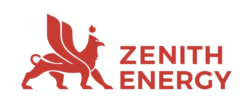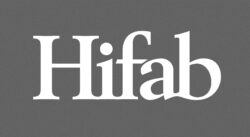Björn Borg (” Björn Borg” or ”the Company”) published its Year-End report for 2024 on February 21, 2025. The following are key events that we have chosen to highlight from the report:
- Revenues amounted to SEK 234.6m (+2.9% higher than estimates)
- Footwear and Sports Apparel paved the way for an 18.7% Y-Y Growth
- Increased marketing spend and one-off costs related to Footwear put pressure on the EBIT-margin
- Robust cash flow resulted in a reduced net debt position
Solid Growth in All Focus Areas
Björn Borg reported net sales of SEK 234.6m (197.6) in the Company’s fourth quarter of fiscal 2024, marking a robust Y-Y increase of 18.7% when factoring currency effects, and 18.6% when excluding these effects. The outcome exceeded our estimates slightly (SEK 228m or 2.9%), primarily driven by stronger-than-anticipated growth in Footwear and Sports Apparel. These product areas were the main growth drivers during the fourth quarter, although all major product categories contributed to the strong performance. Footwear and Sports Apparel demonstrated Y-Y growth of 57% and 44%, respectively, while the largest category, Underwear, grew by a solid 14%, and Bags increased by 30%. Analyst Group views the broad-based growth as encouraging, particularly within the Company’s core product segments, where the Company has identified the most significant growth opportunities ahead.
Upon reviewing the channel mix for the quarter, Björn Borg’s largest channel, wholesale, witnessed an impressive 28% Y-Y growth, with external e-tailers up 15%, driven by strong performance in the German and Dutch markets. The Company’s Own-Ecom maintained solid momentum, albeit at a lower growth rate than in previous quarters, posting a 10% Y-Y growth. However, this compares to a strong 46% increase in Q4-23, presenting tough comps. Own Retail Stores declined by 2% due to planned closures, but when adjusting for the closure of stores, the comparable stores grew by 5%. Additionally, distributors continued to recover from H1-24 weakness, recording a 13% Y-Y growth in Q4-24.
In terms of sales geography, the Company’s largest market, Sweden, grew by 43%, while the Company’s strategic focus market, Germany, recorded a 13% Y-Y growth. The Netherlands saw a modest 2% increase, whereas Belgium and the UK posted slight declines of 4% and 2%, respectively. The other Nordic markets showed mixed performance: Finland grew by 5%, Denmark by a solid 10%, and Norway posted a notable 51% Y-Y increase.
For the full year 2024, Björn Borg’s net sales amounted to SEK 989.7m (872.3), representing a growth of 13.5%. Similar to the fourth quarter, the main growth drivers for the full year were the Footwear (+36% Y-Y) and Sports Apparel (+32% Y-Y) segments, driven by the takeover of distribution from a third party that went bankrupt.
Increased Marketing Spend and One-off Effects Put Pressure on the EBIT-margin
During Q4-24, the Company achieved a gross margin of 53.3% (when including FX-effects) and 53.5% when excluding currency effects, which was slightly lower than estimated (53.7%). The outcome stems from the distribution of Footwear in newly entered markets, which initially had temporarily lower gross margins. However, a stronger focus on profitability within the wholesale business, along with reduced discounts in direct-to-consumer sales, had a positive offsetting effect.
Looking further down the P&L, Björn Borg reported an operating result (EBIT) of SEK 16.8m (20.2) for the fourth quarter, corresponding to an EBIT margin of 7.2%. Adjusting for currency, the operating result amounted to SEK 17.2 (17.6), corresponding to a currency-neutral EBIT margin of 7.3%. Thus, the outcome fell short of our estimate (SEK 20.9m), primarily due to higher-than-expected SG&A costs. The Company attributes the weaker EBIT development in Q4-24 entirely to one-off costs related to the full integration of the Footwear business, as well as increased marketing investments, both aimed at sustaining brand momentum and ensuring future growth.
The full year operating profit landed at SEK 101.8m (100.6), representing a modest growth of 1.3%, and adjusting for currency-headwinds, the operating profit amounted to SEK 94.5m, a decrease of 6%.
Solid Cash Conversion and a Healthy Balance Sheet
In the fourth quarter, Björn Borg tends to free up a significant portion of its working capital, which also was the case in Q4-24. The Company generated SEK 141.2m of free cash flow (FCFF) during Q4-24, with a substantial portion attributed to a reduction in working capital amounting to approx. SEK 121.4m. The increase of SEK 69m in inventory is noteworthy, reaching 26.2% of net sales for the quarter. Although it’s typical for Björn Borg’s inventory levels to peak in the second and fourth quarters, while reaching their lowest points in the first and third quarters, the inventory level in Q4-24 stands out compared to historical levels. The FCFF for the full year 2024 amounted to SEK 62m, compared to 2023 where the FCFF amounted to SEK 110.1m. The decrease is mainly attributed to changes in working capital, as a consequence of the Footwear integration.
Moreover, Björn Borg significantly reduced the Company’s debt position in Q4-24, primarily driven by robust cash conversion during the quarter. This enabled Björn Borg to repay SEK 125.2m of the Company’s overdraft facility, which at the end of the quarter stood at SEK 17.3m. Hence, the net debt position (excl. leases) amounted to SEK 9m, and with the current EBITDA LTM of SEK 134m, the net debt/EBITDA ratio equals approx. 0.1x, which implies a solid and healthy financial position moving forward. The Board has proposed a dividend of SEK 3.0 (3.0) for fiscal year 2025, amounting to a total of SEK 75.4m.
Concluding remarks about the Q4 report
In conclusion, the performance in Q4-24 underscores Björn Borg’s ability to successfully execute on the Company’s strategic focus areas, as evidenced by strong growth in the Footwear and Sports Apparel segments, the Own-Ecom sales channel, as well as the German market. Net sales in the fourth quarter slightly surpassed our estimates, but higher marketing investments and one-off costs from Footwear integration pressured the EBIT margin. However, as both initiatives are expected to be key drivers of long-term growth, laying the groundwork for sustained profitability in the years ahead, Analyst Group views the lower EBIT-margin as a temporary effect. All in all, we consider that Björn Borg has navigated 2024 in a solid way, particularly in light of the in-house integration of the Footwear segment, and we believe that the Company is well-positioned to further strengthen the brand and expand Björn Borg’s market presence ahead.
We will return with an updated equity research report of Björn Borg.





